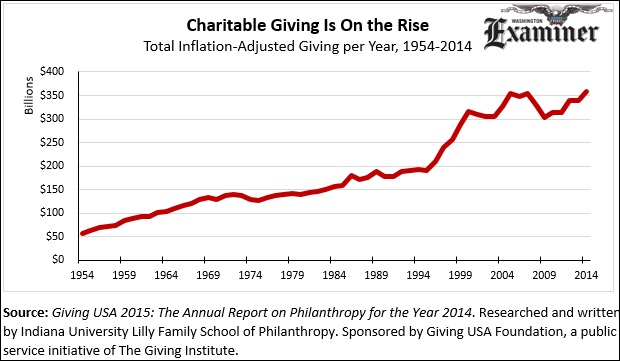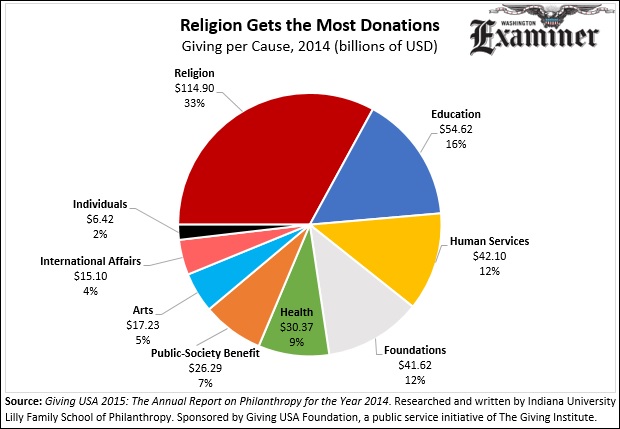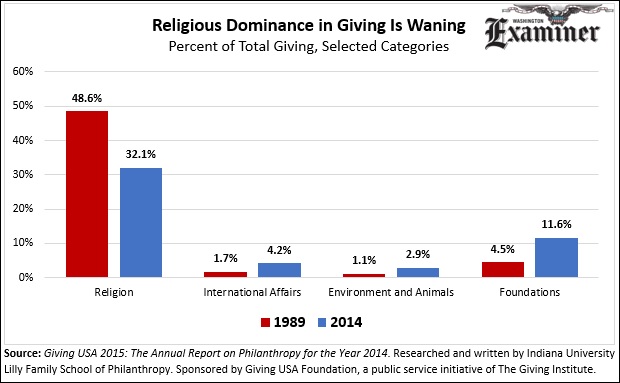Americans’ donations to charity reached record highs in 2014 with $358 billion given, passing the previous record set in 2007, before the recession began.
Donations rose for the fifth year in a row, according to the Giving USA Foundation, which publishes an annual report on giving. Its report on the donations received by the United States’ 1 million charities is the “longest-running and most comprehensive” report on charitable giving in the country.
“The 60-year high for total giving is a great story about resilience and perseverance,” said Keith Curtis, chair of the Giving USA Foundation. “With virtually every economic indicator that gets measured showing growth, I think it’s safe to conclude they played a large part in making 2014 a banner year for giving from every source.”
In four charts made from Giving USA data, here’s how Americans are donating their money:
Giving has risen over time

Since 1954, the earliest available data provided by Giving USA, charitable giving has increased more than six-fold, even after adjusting for inflation. Through the years, giving has had its dips during recessions but has increased by an average of about $5 billion a year. Giving as a portion of the economy has barely budged, holding steady at about 2 percent of GDP.
Most donations come from individuals

Individuals alone donated $258 billion in 2014, 15 times more than the $17.8 billion given by corporations. Money given by all types of sources — individuals, foundations, bequests and corporations — has risen after adjusting for inflation. Individuals give roughly 72 percent of all donations, but that has fallen from 84 percent in 1954. The fastest-rising type of giving is from foundations, which has increased 17.5 times since 1954.
Religious causes get the most donations

Religious institutions received $115 billion in 2014, one-third of all giving and twice as much as the next most popular cause. Less than 10 cents of every dollar donated went to health-related causes, while the arts received 5 cents. The giving category that received the least amount of giving was individuals, who received only $6 billion in 2014.
Non-religious causes are rising faster

It’s not that donations to religious institutions are dropping, but rather that gifts to non-religious causes are rising faster. A quarter-century ago, religious giving made up almost half of all donations. Today, it’s down to one-third. Its decline has been shared widely across the giving categories, but especially by foundations, which now make up 12 percent of every dollar donated, up from 5 percent in 1989. The portion of giving to environmental causes has nearly tripled, to 3 percent.
Giving to international causes has risen as well, but total giving to that category has failed to rise to pre-recession levels, reflecting an increased focus on domestic charities. Giving to international causes includes major natural disaster relief funds. International giving levels typically rise and fall depending on the number of disasters in a given year.
